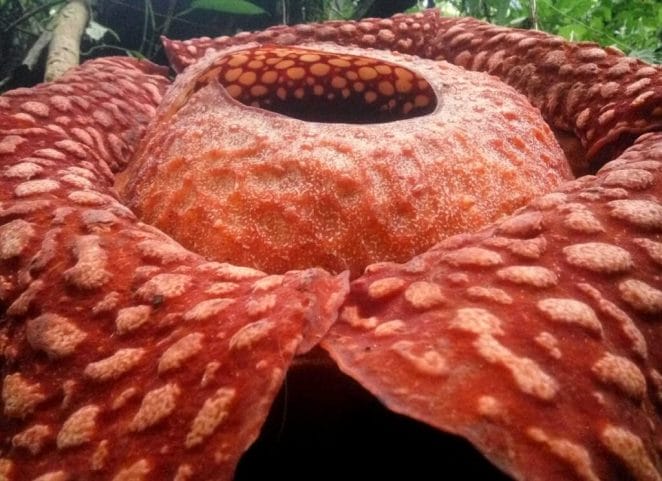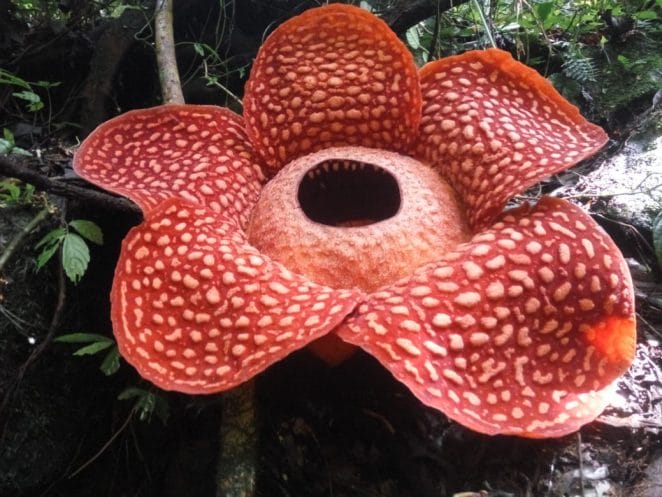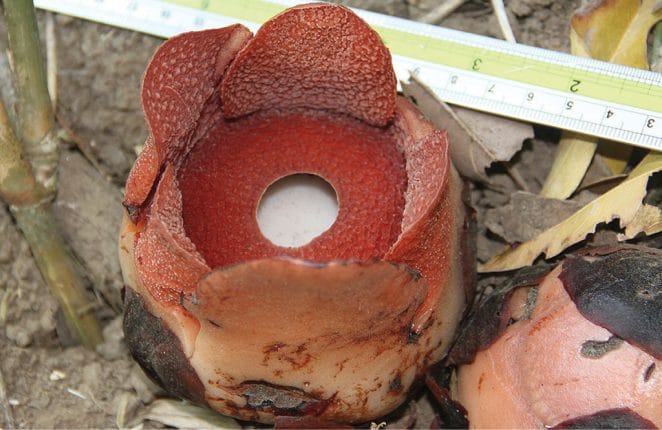Flowering plants are a broad category of plants that produce bright and beautiful blooms. Flowers may be considered delicate, but they serve a crucial service to the natural world, the animal world, and humans. Flowers serve as a bridge between Earth’s three kingdoms of life. They serve as a means for plants to reproduce. They also supply food for both animals and humans. Flowers are often used in perfumes and cosmetics, as well as cut decorations for homes. Flowers, in short, are a lovely reminder of the interconnection of life on Earth.

The World’s Largest Flower
The Rafflesia arnoldii, the world’s largest flower, is more than three feet wide and is known as the corpse flower because of its foul odour. Rafflesia is only found in Southeast Asia, with the majority of them being found in Indonesia, Malaysia, Thailand, and the Philippines.


Did You Know?
- Rafflesia arnoldi was discovered in 1818 on the Sumatran island of Pulau Lebar, by an expedition party led by Sir Stamford Raffles, Lady Sophia (Stamford’s wife) and Dr. Joseph Arnold (Stamford’s doctor & naturalist). Rafflesia arnoldii was named after Dr. Joseph Arnold, although it was actually discovered by his Indonesian guide.
- Rafflesia is difficult to cultivate in laboratories, and dried specimens are difficult to preserve. The Rafflesia has a diameter of 36 to 42 inches and weighs 9 to 12 kg.
- All Rafflesia plants are parasitic, which means they lack any root systems, stalks, or leaves, as well as any chlorophyll, which is essential for photosynthesis. They are completely reliant on their host plants for all of their water and nutrients.
- Rafflesia takes about a year to mature and bloom, developing its distinctive red-orange colour with little white spots that appear to resemble exposed flesh while it is in flower. Following blooming, it releases an offensive odour and begins to decompose into the ground. During the blooming phase, the plant only lasts for five to seven days.
- Rafflesia consueloae, discovered on the Philippine island of Luzon in 2016, set the world record for the smallest species of the genus Rafflesia, with an average diameter of 9.73 cm (3.8 inches).
- The largest Rafflesia tuan-mudae specimen ever discovered measured an amazing 111 centimetres (3.6 feet) in diameter and was discovered in West Sumatra’s forest in 2020.
Sources:Wikipedia, Singapore Infopedia, Phys, Inquirer, BKSDA SUMBAR





GIPHY App Key not set. Please check settings